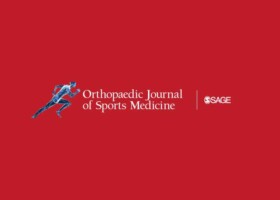
Authors:
Hanson JA, Lee S, Horan MP, Rakowski DR, Millett PJ
Abstract:
Background:
Arthroscopic superior capsular reconstruction (SCR) has been introduced as a successful alternative to latissimus dorsi tendon transfer (LDTT) for irreparable posterosuperior rotator cuff tears.
Purpose:
To compare minimum 5-year clinical outcomes of SCR and LDTT for the treatment of irreparable posterosuperior rotator cuff tears in patients with minimal evidence of arthritis and intact or reparable subscapularis tears.
Study design:
Cohort study; Level of evidence, 3.
Methods:
Patients who underwent SCR or LDTT and had undergone surgery ≥5 years earlier were included. The SCR technique used a dermal allograft customized to the defect. Surgical, demographic, and subjective data were collected prospectively and reviewed retrospectively. Patient-reported outcome (PRO) scores utilized were the American Shoulder and Elbow Surgeons (ASES), Single Assessment Numeric Evaluation (SANE), the short version of the Disabilities of the Arm, Shoulder and Hand score (QuickDASH), 12-Item Short Form Health Survey Physical Component Summary (SF-12 PCS), and patient satisfaction. Further surgical procedures were documented, and treatment that progressed to reverse total shoulder arthroplasty (RTSA) or revision rotator cuff surgery was considered a failure. Kaplan-Meier survivorship analysis was performed.
Results:
Thirty patients (n = 20 men; n = 10 women) with a mean follow-up of 6.3 years (range, 5-10.5 years) were included. A total of 13 patients underwent SCR and 17 patients underwent LDTT. The mean age of the SCR group was 56 years (range, 41.2-63.9 years), and the mean age of the LDTT group was 49 years (range, 34.7-57 years) (P = .006). One patient in the SCR group and 2 patients in the LDTT group progressed to RTSA. Two additional (11.8%) patients in the LDTT group had further surgery-1 had arthroscopic cuff repair and 1 had hardware removal with biopsies. The SCR group demonstrated significantly better ASES (94.1 ± 6.3 vs 72.3 ± 16.4; P = .001), SANE (85.6 ± 8 vs 48.7 ± 19.4; P = .001), QuickDASH (8.8 ± 8.7 vs 24.3 ± 16.5; P = .012), and SF-12 PCS (56.1 ± 2.3 vs 46.5 ± 6; P = .001) PROs at the final follow-up. There was no significant difference between groups in median satisfaction (SCR, 9; LDTT, 8 [P = .379]). At 5 years, survivorship rates were 91.7% and 81.3% for the SCR and LDTT groups, respectively (P = .421).
Conclusion:
At the final follow-up, SCR yielded superior PROs compared with LDTT for the treatment of massive, irreparable posterosuperior rotator cuff tears despite similar patient satisfaction and survivorship between procedures.
For the complete study: Superior Capsule Reconstruction Compared with Latissimus Dorsi Tendon Transfer for Irreparable Rotator Cuff Tears: Minimum 5-year Outcomes

